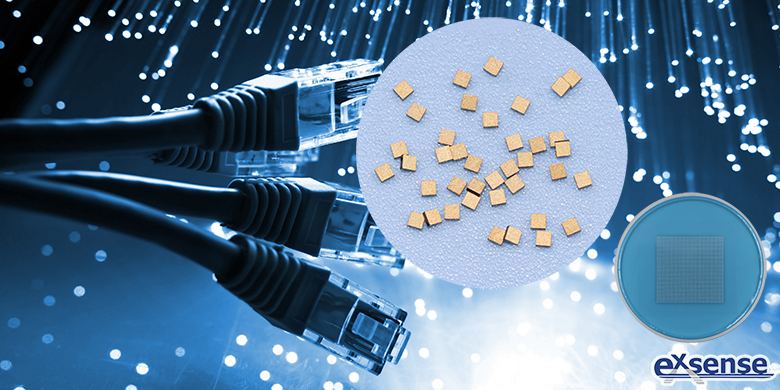
NTC thermistor chip is widely used in various temperature monitoring, temperature control and temperature compensation due to its resistance value varies with temperature. In optical fiber communication, thermistor chip can monitor optical communication module in real time to ensure its safe operation in the specified temperature range, which is an important index of the safe operation of optical fiber communication. In fiber communication, insertion loss and return loss are also two important indicators for evaluating the quality of end-to-end connection between some optical fiber devices, such as fiber connector, optical fiber patch cord, tail fiber, etc.
Insertion loss is a measure of the optical loss between two fixed points in an optical fiber. That is, the optical power loss in optical communication system fiber link caused by the intervention of optical devices, the unit is dB. Its calculation formula is: IL=-10lg (Pout/Pin), Pout is the output optical power, Pin is the input optical power.
The smaller the value of insertion loss, the better the performance. For example, insertion loss is 0.3dB, which is better than 0.5dB. In general, the attenuation difference (less than 0.1dB) between welding and manual connections will be smaller than the connection between fiber optic connectors. Recommended maximum dB losses for data center fiber wiring: maximum of LC multi-mode fiber connector is 15dB, maximum of LC single-mode connector is 15dB, maximum of MPO/MTP multi-mode fiber connector is 20dB, minimum of MPO/MTP single-mode fiber connector is 30dB.
Return loss mainly refers to the power loss of the reflected or returned signal due to discontinuity and impedance mismatch when the optical fiber signal enters or leaves an optical device component (such as a fiber connector). Insertion loss is mainly used to measure the result signal value when the optical link encounters loss, while return loss is used to measure the reflected signal loss value when the optical link encounters component access. Its calculation formula is: RL=-10lg (P0/P1), P0 is reflected optical power, P1 is input optical power.
The return loss value is dB, which is usually negative. Therefore, the larger the value of return loss, the better. The typical specification range is -15~-60dB. According to industry standards, the return loss of Ultra PC polished optical fiber connectors should be larger than 50dB, and the return loss of bevel polished fiber connectors should be larger than 60dB. The PC type should be larger than 40dB. For multi-mode fibers, the typical RL value is between 20 and 40dB.
So, what are the factors that affect the insertion los and return loss of optical fiber communication?
First, quality and cleanliness of end face
Defects (such as scratches, pits, cracks, etc.) or particle contamination of end face of optical fiber can directly affect performance of connector, resulting in poor IL/RL. Even tiny dust particles on 5 micron single-mode cores can eventually block the optical signals, causing signal loss.
Second, optical fiber broken
Sometimes an optical fiber breaks but still guides light through, which can lead to bad IL or RL.
Third, the bending radius of the optical fiber is too large
Although the optical fiber can be bent, its bending range is limited, beyond which optical loss will be significantly increased, which may directly lead to damage. Therefore, it’s recommended to keep the radius as large as possible, generally no more than 10 times the diameter of the coat, in cases where the fiber is to be coiled.
In optical fiber communication, NTC thermistor chip can play a good role in temperature monitoring and temperature control, NTC thermistor chip for optical module produced by EXSENSE Electronics Technology Co., Ltd., which is great stability, fast reaction speed, it’s suitable for boding of optical communication, laser module.



